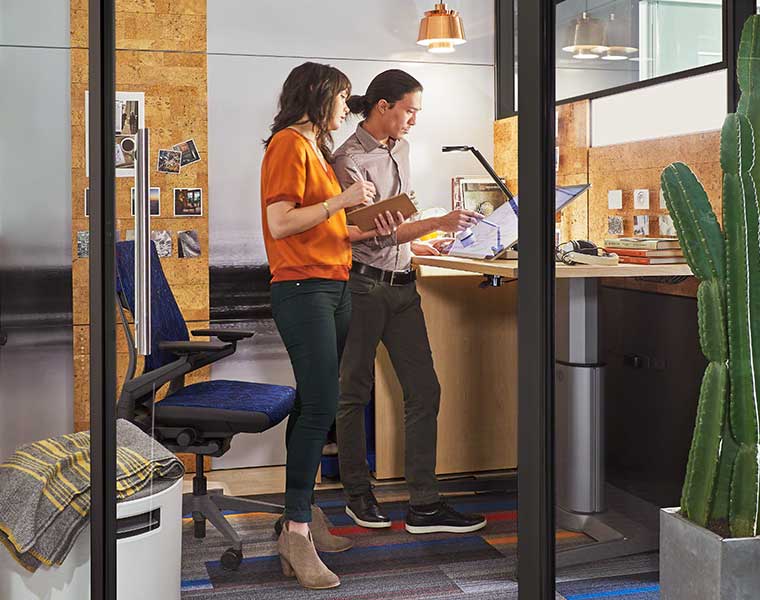According to Steelcase’s recent Future of Work Survey, an alarming 75% of employees say their current collaborative spaces aren’t helping them be creative. We suspect that this is largely down to poor design and/or lack of facilities so we’re here to offer our expert advice on the essentials you need to include in your collaborative workspace.
Before you can appreciate the value of these however, you first need to understand some of the main functions of a collaborative setting…
What are collaboration spaces used for?
Collaborative spaces are used for group tasks and co-working so they need to be flexible, multifunctional and cater to a diverse range of requirements. When a client comes to us wanting to boost collaboration in their workplace, we design a purpose-built setting that will facilitate and encourage the following:
- Creative thought and innovation
- Free idea-sharing and discussions
- Impromptu meetings
- Casual interaction outside of the professional hierarchy
- Collaborative problem-solving
- Improved communication between employees
- A transition zone between spaces (e.g. the desk and the boardroom)
What to include in a collaborative workspace:
When it comes to collaborative space essentials, there are two considerations, each of which complements the other when incorporated into a strategic workspace design scheme…
Modern office furniture
The most important consideration when selecting furniture for collaborative spaces is how choice and control can be granted to the user. Staff performance is improved when they are comfortable and have access to the required resources around them. This will enabling the undertaking of a multitude of activities, covering various work modes, while encouraging regular changes in posture.
For this reason, ergonomic office furniture and modular seating solutions are the most effective options as they keep comfort and operability in check and allow reconfiguration and adaptation in accordance to task type and requirements.
Collaborative workplace technology
Office workers can collaborate most effectively when they have access to spaces that benefit from integrated technology. Sharing and recording ideas visually, enable staff to work smartly, creatively and efficiently, without the need to move between spaces leading to the disruption of work. Some of our most popular solutions include:
Clickshare – No complicated cables or software means that staff can plug in and participate from their own devices, negating the need to crowd around one single screen.
Media:scape – Integrating furniture and technology facilitates seamless collaboration, while PUCK technology allows quick and easy screen-sharing.
Google Jamboard – With it’s 16-touch point technology and multi-access interface, the Google Jamboard is the perfect addition to any collaborative workspace.
SMART Board – A great tool for collaborative work and keeping users engaged whilst creating innovative solutions, brainstorming and sharing screens wirelessly.
Video conferencing technology – This ensures remote workers, freelancers and international colleagues stay in the loop with co-working sessions.
The benefits of a collaborative working:
Including all (or a combination) of the essentials listed above will ensure staff know that collaboration and moving away from their desk to work is not only acceptable but encouraged.
Fostering a collaborative environment where staff are comfortable co-working will open the door to many benefits for the business:
- It stimulates innovation and creative thinking
- Better, quicker solutions through shared problem-solving
- Everybody’s voice is heard and everybody’s skills are used
- You get the advantage of more combined experience
- Staff are happier and more fulfilled in their roles
When sharing our advice on what millennials are looking for in a workplace, we also discovered through research by Mindspace that 88% of millennials would rather work in a collaborative environment than a competitive one.
However, more than 45% of millennials also shared that there is little or no collaboration between teams or departments in their current workplace. Providing this space of co-creation and dynamic group work is there for a great way to attract and retain young talent.
To see how we improved collaboration for Whitford Ltd earlier this year by implementing video conferencing and SMART facilities, see our case study.
